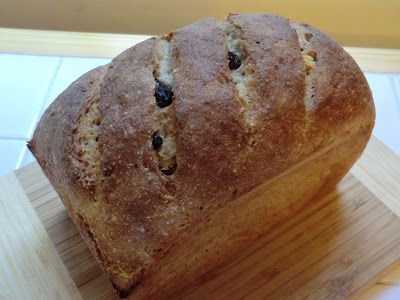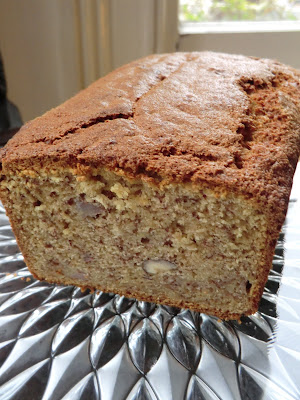Benoîtons are French small rectangular shaped rolls, most often flavoured with nuts and raisins. They are traditionally made with rye flour (or a mix of rye and white flours).
Forever on the lookout for new breakfast ideas for workdays (see Breakfast Fruit bread), i'll be taking these to work filled with butter and jam or with peanut butter. I have to admit though, they are probably best fresh out the oven with a generous spreading of good butter :-)
Makes 8 benoîtons
Ingredients
-100g light rye flour
-200g white bread flour
-1 tsp quick yeast
-1 tsp salt
-150ml milk
-100ml water
-70g chopped dried apricots
-40g chopped hazelnuts
1. Warm the milk in a small saucepan (do not boil) then leave to cool to room temperature.
2. In a large bowl, combine the flours, salt, and yeast. Pour in the milk and mix, adding enough water just to bring the dough together. Knead for 10 minutes (by hand or in a mixer with dough-hook attachment), until smooth and elastic. Tip in the apricots and hazelnuts and knead again until incorporated.
3. Put the dough into a greased bowl and leave to prove in a warm spot for 1 hour or until doubled in size.
4. On a floured surface, flatten out the dough into a rectangle roughly 30cm x 20cm and 2cm thick. Cut into 5 strips from top to bottom then cut once along the width to form 10 benoîtons. Transfer to 2 lined / greased baking sheets and leave to rise for 15 - 20 minutes. Meanwhile preheat the oven to 220C.
5. Once risen, brush the benoítons with water and bake for 15 - 20 minutes or until golden and crisp.






.jpg)





















